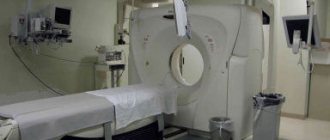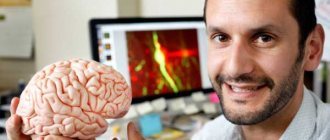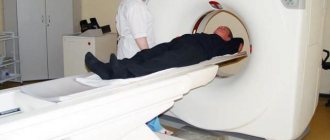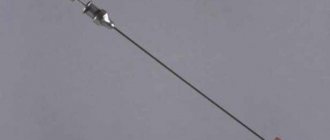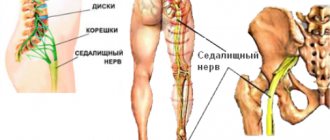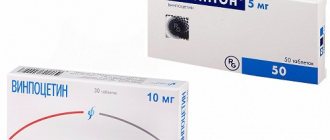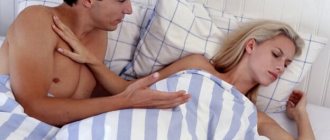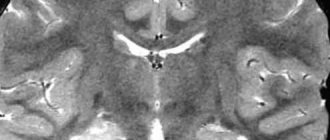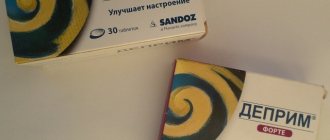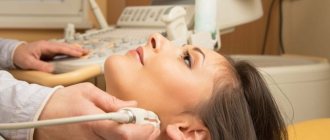Semyannikova Maria Pavlovna
general practitioner, somnologist
A polysomnographic study is a study of a person while they sleep. Polysomnography is a unique opportunity to study a variety of problems associated with nocturnal behavior. Polysomnographic studies help to understand the causes of certain diseases, to determine whether sleep disturbance is the primary cause or whether it is caused by some kind of somatic disorder. By analyzing the results of polysomnography, the doctor determines the stages of sleep and their duration, and also pays attention to how various physiological indicators relate to the stages of sleep. By accurately determining the mechanism of sleep disorders, the doctor can choose the most successful treatment method and prevent further unfavorable course of the disease.
What is polysomnography
Polysomnography (PSG) is a comprehensive study of the physiology of the body during sleep. The functioning of organs and systems is studied for 7-8 hours using several parameters at once. Impulses emanating from human organs change their character during sleep and differ from signals in a waking state. Using PSG, it is possible to record these differences, compare indicators with normal ones, identify violations and, in some cases, establish their causes.
PSG registers:
- Breathing (respiratory flow) and snoring;
- Saturation of arterial blood with oxygen (saturation);
- Respiratory movements of the chest and abdominal wall;
- Electrocardiogram;
- Electroencephalogram (electrical activity of the brain);
- Electrooculogram (eye movements);
- Electromyogram (mental muscle tone)
- Movements of the lower extremities. Body position. Video recording of sleep for 8 hours.
PSG begins with the application of electrodes for 40 minutes and is a completely painless procedure. A special technique is used to attach small, lightweight electrodes, which allows the patient to fall asleep peacefully. During the study, the patient's condition and signal recording are continuously monitored by the nurse on duty. The patient sleeps on a comfortable bed. The laboratory is equipped with a video camera that records movements, body positions and other events. Special infrared illumination allows video recording in low light and in complete darkness.
The essence of the method is that it reveals
Polysomnography is carried out using high-precision sensors that are fixed on different parts of the human body. This is done 1-3 hours before going to bed. Attaching the sensors takes about 40 minutes. Then, during 7-8 hours of night rest, a specialist monitors the instrument readings. The data obtained using sensors is processed by computer and stored on a storage medium. They can be printed if necessary.
In the morning, the patient can wait for the doctor’s findings or go to work and come to the clinic in a few days. In any case, after deciphering the information obtained using PSG, the doctor will make his verdict, give recommendations, and, if necessary, prescribe treatment.
Polysomnography allows you to study the work of different organs and systems. Simultaneously:
- ECG (electrocardiography) - study of the heart: conductivity, contractility, excitability,
- EEG (electroencephalography) – recording the electrical activity of the brain in different phases of sleep, recording is carried out on 4 channels at once,
- electromyography - study of the activity of the chin muscles,
- electrooculography - the study of eye movements during different phases of sleep,
- study of orozonal (respiratory) flow with recording of air temperature during inhalation and exhalation,
- pulse oximetry - determination of the degree of oxygen saturation of the blood,
- control of limb movements during sleep,
- study of changes in body positions,
- recording the respiratory movements of the abdomen and chest.
In some cases, monitoring is also carried out on the level of body temperature, the functioning of the digestive tract, and the body’s reaction to the inclusion of a light source.
To determine some functions, a video camera is also installed in the room. The main part of the information is obtained using sensors. It is important that these devices are not attached to long wires and do not “tie” the patient to the bed on which he sleeps. He can get up, sit down, go to the toilet, etc. at any time.
Most often, polysomnography is performed in special departments of hospitals or sleep clinics. In some cases, it is necessary to spend not one, but 2 or even 3 nights in a hospital, if a person cannot immediately sleep peacefully in a new place. People who do not adapt well to hospital conditions can be assessed at home. Not all clinics provide this service, but specialists from some of them come to your home.
What pathologies can be detected using polysomnography:
- Blood pressure surges during sleep.
- Sleep apnea syndrome (stopping breathing during sleep).
- Impaired blood circulation in areas of the body.
- Heart rhythm disturbances (arrhythmia) during sleep.
- Interruptions in blood oxygen saturation.
- Muscle spasms.
- Movement of the limbs, including the legs in cases of restless legs syndrome.
- Disorders of the brain that provoke disruptions in the alternation of sleep phases.
- Sleepwalking, sleepwalking.
- Spoken speech (pronunciation of words and phrases during sleep).
What to expect from polysomnography?
In the process of research
You arrive at the medical center for polysomnography and spend the rest of the evening and throughout the night and part of the morning. Therefore, have with you what you usually need before going to bed and during sleep. Including your usual clothes.
The room in which the study is conducted resembles a hotel room. During the exploration, it is dark and quiet. There are no other people in the room and there is a private bathroom.
There is a video camera in the room so that the researcher can see what is happening in the room. There is also an audio connection so that the researcher can hear the patient without being in the room.
After the patient is ready to sleep, the researcher places electrodes on the patient's head, temples, chest and legs. The electrodes are connected by a computer. The wires are long enough to allow the patient to behave normally while sleeping. The clamp is also placed on the finger of the hand. This is a sensor for determining the oxygen content in the blood.
While the patient is sleeping, the researcher records him:
- brain activity,
- eye movements,
- heart rate,
- frequency and depth of breathing,
- blood oxygen content,
- body position,
- limb movements,
- snoring or other noises the patient makes while sleeping
Surveillance is carried out throughout the night. If a patient needs help, he just needs to say so and he will be heard.
After research
In the morning, the electrodes are removed and the patient can leave the medical center. The results of the examination are discussed during your next visit to the doctor. After polysomnography, you can immediately return to your normal lifestyle.
Indications for the study
The study is indicated for patients with the following complaints and conditions:
- after a traumatic brain injury,
- bruxism (grinding teeth in sleep),
- sleepwalking (sleepwalking, somnambulism),
- sleep paralysis,
- narcolepsy,
- frequent awakenings for no reason or constant shallow sleep,
- increased blood pressure during sleep and upon awakening,
- various types of apnea - stopping breathing during sleep,
- hypersomnia,
- enuresis (bedwetting),
- sleep arrhythmias,
- restless legs syndrome, any active movements that interfere with sleep,
- sleep disorders in epilepsy,
- sleep disturbances due to stroke or heart attack,
- deviations from normal sleep due to thyroid diseases, diabetes mellitus and other endocrine disorders.
In children, indications also include fecal incontinence (encopresis) in preschoolers and schoolchildren, developmental delay (speech, intellectual, physical), monotonous movements when falling asleep, nervous tics, stuttering, neuroses, and reduced learning ability.
Why do you need to do polysomnography?
Polysomnography studies the stages of sleep to determine at what stage sleep is interrupted and why.
The normal process of falling asleep begins with a stage characterized by slow eye movement. During this stage, the electrical potentials of the brain calm down (according to electroencephalography).
After one to two hours of the first stage of sleep, the brain is activated again, the eyes begin to move quickly again. Most dreams occur during this period.
Normally, there are up to 6 changes in the phases of night sleep. Rapid and slow eye movement phases alternate at intervals of approximately 90 minutes. Sleep disorders can disrupt this process.
Polysomnography records changes in sleep phases and determines when the sleep process is interrupted.
Polysomnography is recommended by your doctor if you suspect:
- sleep apnea or other sleep-related breathing disorder
- have periodic limb movement disorder. In this disorder, the patient involuntarily flexes and straightens his legs and arms during sleep; this condition may be associated with restless legs syndrome,
- Narcolepsy is a condition in which there is an all-consuming need to sleep during the day,
- sleep behavior disorder, when a person performs some actions in a dream, behaves unusually during sleep,
- unexplained chronic insomnia.
How to prepare for polysomnography
Monitoring the body during sleep does not require complex preparation.
1 day before the procedure, it is recommended to refrain from drinks containing caffeine, daytime naps, and increased mental and physical activity. The day before (1-2 days before) you do not need to watch films or programs that excite the nervous system. During this period, you should refrain from gambling, including computer games.
1-2 days before PSG, you do not need to drink alcohol, energy drinks, or Coca-Cola. A light dinner is recommended before the procedure. You need to prepare clean clothes for sleeping, tune in to a peaceful, calm mood.
Are there any contraindications?
Since monitoring the body's functioning during sleep is not an invasive diagnostic method, there are no absolute contraindications for its implementation. The study should be postponed for a while if you have the following diseases:
- acute respiratory viral infection;
- acute infectious diseases of a different nature;
- chronic diseases in the acute stage.
These conditions can affect the results of polysomnography, therefore, in order to avoid unreliable results, it is not recommended to conduct the study during these periods.
Research methodology
In the evening, the nurse installs sensors on the patient's body. They are usually attached to the head, chest, and limbs. The number of these devices may vary.
The sensors do not restrict movement. You can walk, talk on your mobile phone, watch TV, etc. When you feel sleepy, you need to report this to the medical post.
While the patient is sleeping, his body is monitored. The monitor displays the work of the brain, heart, breathing process, changes in blood pressure and other indicators in real time.
If falling asleep is difficult, the client may be offered a mild sleeping pill, the use of which will not affect the results of the examination. However, it is advisable to avoid sleeping pills or sedatives to exclude extraneous influences on nervous activity.
In the morning, a sleeping person is woken up at 7 o'clock or he wakes up on his own. Then you can go to work or wait for the doctor to decipher the information received. As a rule, interpretation of the results takes from 3-4 hours to several days. You can make an appointment with a doctor at a later time, on another day.
If parasomnography is performed at the patient’s home, then medical staff comes to him in the evening to install the sensors, and in the morning to remove them. Observation data is stored in a record. The screening is deciphered at the clinic, after which the patient is invited to a consultation with a somnologist. If necessary, he will refer you for further examination.
Preparing for the study
Conducting a somnographic examination requires compliance with certain rules.
During the entire day before the study, you cannot:
- sleep.
- drink alcohol, tea and coffee, carbonated drinks
- take sedatives and sleeping pills.
Patients need to wash off the polish from the nail of the index finger of the left hand. Before the study, you should also not apply lotions, creams or perfumes to your body.
Immediately before the examination, the patient must wash his face with soap.
Polysomnographic systems: types, advantages and disadvantages
Two types of equipment can be used to perform PSG. Each of them has both advantages and disadvantages.
The advantage of a stationary instrumentation system is that it allows monitoring in real time. If the patient's sensor becomes disconnected during his sleep, this will be immediately noticed by the nurse, because... will be reflected in the monitor readings. The information channel can be restored immediately. A healthcare worker comes into the room and carefully adjusts the sensor. Any situation associated with dangerous symptoms, for example, respiratory arrest while the patient is sleeping, can be resolved no less quickly. Modern stationary devices are not bulky and do not restrict movement. Disadvantages include the high cost of the equipment and the mandatory presence of medical personnel at the diagnostic site. The study is carried out in a special clinic or department.
The mobile equipment system is convenient in that it can be used outside a special medical institution, for example, at the patient’s home, in the ward of any hospital department. There is no need for a nurse or doctor to be on duty during the examination. All information is accumulated in the device’s memory and is reset to the computer after the session is completed. But the mobile method of examination may be less informative. If one or more sensors are displaced, the information channel will be disrupted and a complete picture will not be obtained.
Polysomnographic study
Polysomnography is the main method of objective instrumental assessment of the picture of sleep disturbance in a patient. Its implementation is possible only in specialized somnology hospitals, and is usually difficult to access in the routine work of a doctor.
Polysomnography involves simultaneous recording of several parameters during sleep, such as:
Ø Electroencephalography (EEG) or telemonitoring-EEG.
Ø Electromyography (EMG).
Ø Electrooculography (EOG).
Ø ECG or pulse rate.
Ø Nasopharyngeal flow (air movement through the nasal and oral cavities).
Ø Thoracoabdominal movements (movements of the chest and abdominal wall).
Ø The sound of snoring using a microphone, a laryngophone (a piezo transducer attached to the side of the trachea) or nasal cannulas to record the pressure of the air flow.
Ø Saturation of blood hemoglobin with oxygen (saturation).
Ø Body position during sleep (actography).
Ø Movement of the lower and/or upper limbs.
Registration of EEG, EOG and EMG is the minimum required set for assessing sleep structure. Other indicators are recorded if there are indications for them (for example, to detect epileptic seizures during sleep or sleep apnea) or for scientific purposes.
In most cases, non-instrumental methods for diagnosis are sufficient. A polysomnographic study is usually performed after difficulties arise in diagnosis and treatment, and there is a need to consult a somnologist (for example, with epileptic seizures during sleep, sleep behavior disorders, sleep apnea syndrome, suspected discrepancy between subjective and objective characteristics sleep disorders (“sleep agnosia”)).
From the point of view of polysomnographic analysis, human sleep is a multifunctional state and consists of a phase of slow-wave sleep (represented by four stages) and a phase of rapid eye movement sleep (also called paradoxical sleep, REM sleep), which together form the sleep cycle. During the entire sleep period, there are usually 4-6 sleep cycles. Each of the stages and phases has its own specific EEG, EMG, EOG and autonomic characteristics. During night sleep, there is a periodic change from one stage to another, and the total duration of these stages of sleep during the night and the sequence of their alternation determines the quality of sleep.
The duration of each stage during the sleep period is not the same. Wakefulness in healthy people does not take up more than 5% of sleep. About 70% of your sleep time is NREM sleep. The first stage takes from 2 to 5%. Stage 2 ranges from 45 to 55%. Delta sleep – from 13 to 23%. REM sleep – from 20 to 25%.
With insomnia, there is a reduction in sleep duration, an increase in the prevalence of wakefulness and the superficial first stage, a decrease in the third and fourth stages of slow-wave sleep, and with severe disturbances, a decrease in the time of REM sleep is noted.
In case of suspected paradoxical insomnia, a polysomnographic study allows us to identify the degree of inconsistency, exaggeration of real complaints and correlate them with objective indicators of sleep, and thus avoid the possibility of excessive prescription of sleeping pills that are not adequate to the actual disorder.
A polysomnographic study can help identify sleep disorders in patients with mental, neurological or somatic diseases, who may not complain of insomnia at all or present minor complaints that do not correspond to the actual disturbances. In these cases, adequate treatment of insomnia can improve the quality of life and have a positive effect on the underlying disease.
Treatment
Basic provisions
In the treatment of insomnia, both non-drug and medicinal methods are used, both independently and in combination with each other. Non-medicinal methods include sleep hygiene, psychotherapeutic approaches, physiotherapy, and phototherapy.
When assessing the effectiveness of treatment for insomnia, as a rule, it is enough to focus on the patient’s subjective satisfaction with sleep and normalization of the quality of daytime activity.
There are a number of principles in the treatment of insomnia, and it is important to limit the use of sleeping pills (hypnotics) due to the presence of a number of side effects, in particular, addiction to the drug, the development of dependence and the rebound effect characteristic of all groups of hypnotics (although the risk of their development is not high) . It is necessary to try to help the patient with non-drug methods, or by prescribing drugs in minimal therapeutic doses for the shortest possible period of time, necessarily in combination with other approaches.
An important task is to exclude curable causes of insomnia. It includes treatment of psychopathic and borderline mental disorders, endogenous mental, organic neurological, somatic diseases, cessation of abuse of psychotropic drugs and alcohol, adequate treatment of sleep apnea and restless legs syndrome.
Transient (acute) insomnia usually goes away on its own, or when the causes that caused it are eliminated. In subacute and especially chronic forms, this is usually not enough, but, nevertheless, it is important and necessary, if possible, to identify, eliminate or treat such causes.
The sleep hygiene method may be sufficient and the only one in a number of cases, in particular in elderly patients and insomnia caused by poor sleep hygiene, but it is mandatory when using other approaches to the treatment of insomnia.
It is necessary to use drugs with proven effectiveness and taking into account ideas about the properties of modern sleeping pills (concomitant and side effects, half-life, etc.).
When starting to use medications to treat insomnia, it is advisable to use herbal remedies or prescribe a chemical hypnotic in half the dose recommended by the manufacturer.
The preferred drugs for insomnia are modern non-benzodiazepine drugs with selective action: doxylamine (Donormil), zopiclone (Imovan, Somnol), zolpidem (Ivadal), zaleplon (Andante, Sonata), eszopiclone (Lunesta).
Correcting sleep disorders can take a long time, but it is not advisable to use sleeping pills for more than 3 weeks.
It is necessary to take measures to prevent the re-development of insomnia or its chronicity. For this purpose, after stressful situations, anti-stress measures (medicinal and non-medicinal) are carried out during the daytime. It is possible to conduct short-term courses of prescribing sleeping pills (for 1–2 nights), but not more than once a week.
Urgent Care
Often, the diagnosis of “Insomnia” is not the main one and is therefore missed, since a more severe pathology comes to the fore, in the complex of symptoms of which it is included. A typical example is the consideration of insomnia and increased anxiety as a manifestation of “encephalopathy” in hypertension; here, at best, the patient is prescribed sleeping pills for a short period, which ultimately does not give any result other than a negative one. This is why a thorough history is necessary.
Maintaining sleep hygiene
So-called sleep hygiene includes a number of recommendations:
- Go to bed and get up at the same time.
- Don't go to bed angry or too early.
- Avoid daytime naps, especially in the afternoon.
— Develop a specific ritual for falling asleep (for example, a walk before bed, a warm bath).
- Use the bed only for sleeping, and not for eating, reading, or lying down.
— For older people, it is often enough to explain that the duration and depth of sleep decreases with age, and also to recommend eliminating daytime naps when waking up early.
- Do not drink tea, coffee, nicotine at night, do not overeat at night, avoid drinking alcohol at night.
— Reduce stressful situations, mental stress, especially in the evening.
- Regularly engage in physical exercise in the morning and afternoon, but not in the evening, or organize physical activity in the evening, but no later than 3 hours before bedtime.
— If you can’t fall asleep, you shouldn’t force yourself. You need to get up after a certain period of time (for example, 30 - 40 minutes) and do something until you want to fall asleep.
- Regularly use water treatments before bed - a cool shower (slight cooling of the body is one of the elements of the physiology of falling asleep). In some cases, you can use a warm shower (at a comfortable temperature) until you feel slight muscle relaxation. The use of contrasting water procedures, excessively hot or cold baths is not recommended.
Psychotherapy
Psychotherapy is indicated for any form of sleep disturbance. The most common and accessible method is behavioral psychotherapy. It represents a direction in which the patient learns to lead a lifestyle and behavior in which the likelihood of developing insomnia decreases. Various methods of psychotherapy are also used, including rational psychotherapy, autogenic training, hypnosuggestive methods, biofeedback, cognitive behavioral therapy, individual and group psychotherapy.
Phototherapy
Phototherapy is a method of treatment with bright white light (intensity from 2000 to 10,000 lux) based on modern ideas about the effect of bright light on the neurotransmitter systems of the brain (serotonin, dopamine, melatonergic) and allows you to control circadian rhythms, including through the eye system, hypothalamus and pineal gland. h. sleep-wake cycle. Treatment with this method is highly effective for insomnia, but is possible in specialized centers and is difficult for routine use.
Previous5Next
Possible contraindications
There are no obvious contraindications for PSG diagnostics. Polysomnography is a gentle, non-invasive examination method. The body is not harmed, there is no physical impact on it. The procedure is harmless for pregnant women and children. It can be done at any age.
But there are reasons why PSG is recommended to be postponed to another time:
- ARVI or acute infectious disease. It is better to conduct a sleep study after complete recovery.
- Exacerbation of chronic diseases. It is better to plan polysomnography during stable remission.
During a period of acute illness, when all the body’s forces are aimed at fighting the disease, the picture of the functioning of organs and systems will be distorted. But this type of morbidity is temporary. With recovery or remission, the functioning of the body returns to the patient’s normal state.

